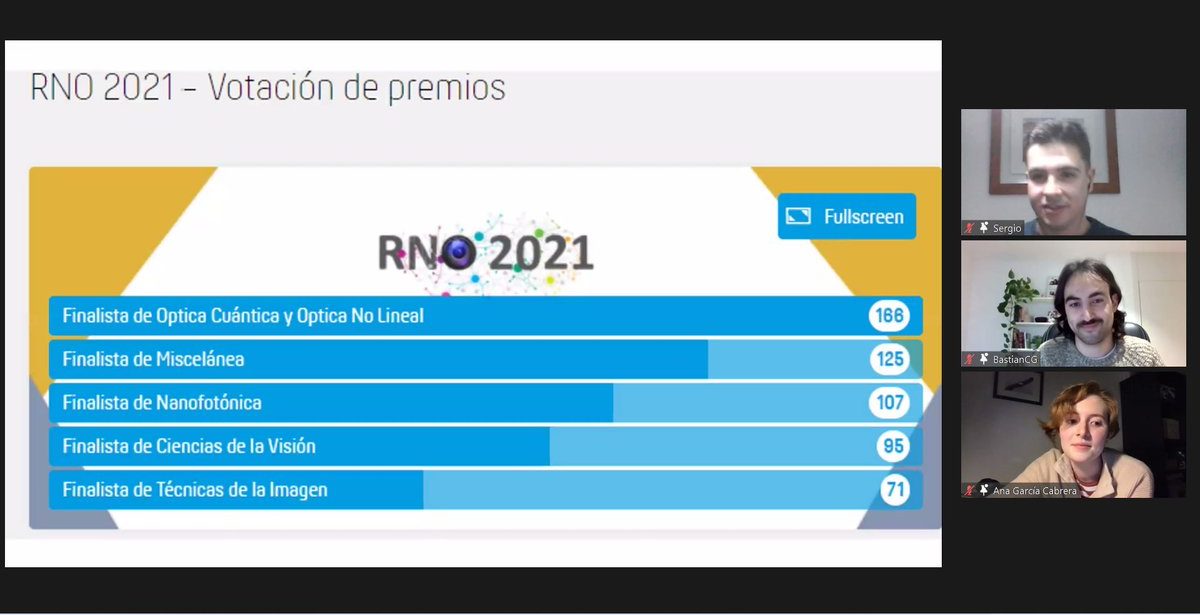The XIII National Meeting of Optics (#RNO2021) ended last week after three days full of interesting contributions and work.
It is with great regret that we say goodbye to this edition, although we do so with a bittersweet feeling since Ana García Cabrera, doctoral student and member of the GIR Aplicaciones Lásica y Fótonica was chosen as the winner of the RNO2021 award in the category of Quantum and Nonlinear Optics.
Ana presented her work “Ultrafast Talbot Spectroscopy” of which she is co-author along with Carlos Hernández – García and Luis Plaja. You can read the summary below.
Abstract:
High-order harmonic generation is an extraordinary tool that allows for the production of high-frequency coherent radiation in the form of very short pulses that can be used to unveil the properties of matter at the nanoscale. High-order harmonic generation occurs during the interaction of an intense laser with the atoms in matter. First, the laser distorts the atomic potential, releasing the electron through tunnel ionization. Then, the electron is accelerated by the laser field and redirected to rescatter with its parent ion, leading to the emission of radiation in the form of harmonics of the incident laser’s frequency. In the spatial scale where this process occurs, the electrons behave as waves and, therefore, they experience some phenomena that are typically observed in light, like the Talbot effect. The (optical) Talbot effect leads to the formation of a series of self-images of a periodic field distribution —like that in a diffraction grating— at regular distances.
In this work, we simulate an experiment of matter Talbot imaging with the ionized electronic wavefunction in a crystal during the high-order harmonic generation. The periodic wavefunction in the crystal is released by the laser field and, upon its evolution, it experiences the formation of Talbot self-images over time. The temporal modulations in the harmonic signal, caused by the matter Talbot effect, leave a trace in the harmonic spectrum that depends on the band occupation of the crystal. Therefore, we propose a new spectroscopic tool, ultrafast Talbot spectroscopy, based on the already known Talbot -Lau interferometry.
You can consult the article that she has published about this same work in the following link or download it from the institutional repository of the University of Salamanca GREDOS.
Ana García-Cabrera et al 2021 New J. Phys. 23 093011
We congratulate Ana and the rest of the congress winners and finalists!
All the details of the congress can be consulted on its website and its Twitter account (hashtag #RNO2021)


